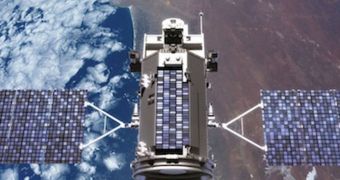According to official sources from the American space agency, it would appear that one of the main focuses that the organization will have in the coming years will be Earth observation programs.
Both the White House and Congress approve of this orientation that NASA chose, and their support is bound to help the agency go through the necessary steps for setting up such an endeavor.
The extensive programs it considers span a timeframe between 2011 and 2012, experts say, and include no less than 16 major science missions. This means an average of 1.6 missions per year.
One of the main reasons why this is becoming possible is because the new budget plans that Congress approved award the NASA Earth Science Division with an additional $2.4 billion in funds, over the previous budget plan.
The new funds are still awaiting for Congressional approval, but the ESD director, Michael Freilich, says that there is no reason to suspect that the money will be tied up over disputes.
With the $2.4 billion boost, NASA will “to go from flying one mission every couple of years to flying a couple of missions per year,” he explains, saying that this is unprecedented in the agency's history.
“What a difference a year makes. Last year things were a little bit dicey. This year we are moving forward rather dramatically,” he said earlier this month at the 2010 annual fall meeting of the American Geophysical Union, in San Francisco.
Three new Earth-observing satellite launches are scheduled for 2011 alone. Another launch is planned for 2012, with an additional two spacecraft scheduled to take to orbit in 2013.
The Glory spacecraft will start surveying the climate in February 2011, the US-Argentina Aquarius sea-surface salinity mission will launch in June, and October will see the launch of the National Polar-orbiting Operational Environment Satellite Preparatory Project (NPP) mission.
Freilich says that the launch of the NPP is especially good news, since the event has been delayed many times before, due to technical glitches and other issues. The spacecraft is currently undergoing environmental testing, Space reports.
“All five instruments are integrated mechanically and electrically onto NPP. I'm becoming increasingly confident that an October 2011 launch date is achievable,” the NASA official explains.
In order to be able to conduct the most relevant science possible, the American space agency will collaborate with the German Aerospace Center (DLR) and the French space agency in developing some of the missions.

 14 DAY TRIAL //
14 DAY TRIAL //